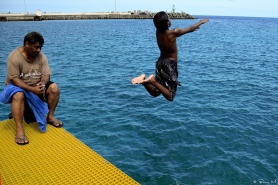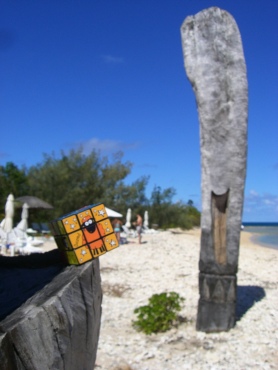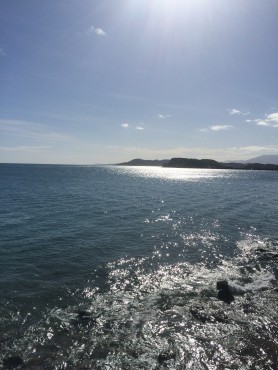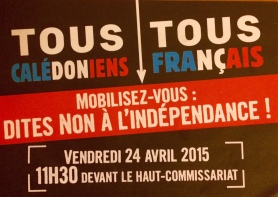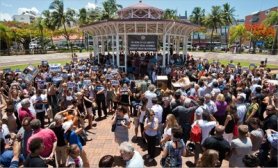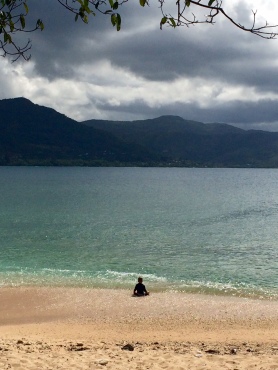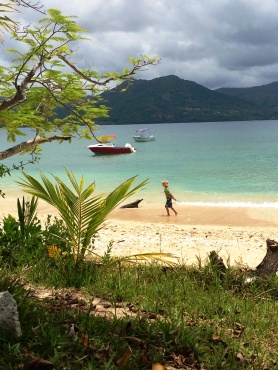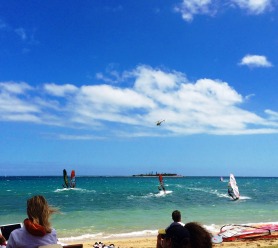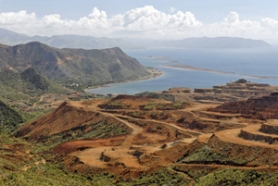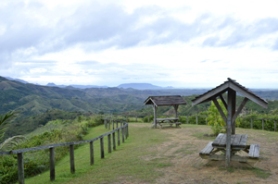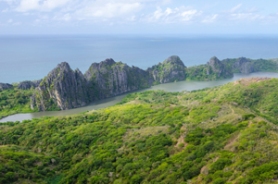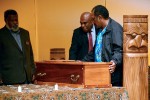by Guest Author, Anthony Nanson
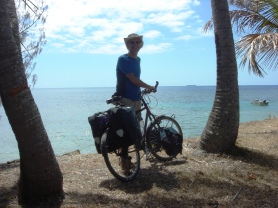
The first time I came back from New Caledonia, in 2007, I showed my friend Peter a map of the country and he said, ‘It looks like it could be a great place to cycle in.’ Peter is crazy about cycling, has cycle-toured in many countries. When I returned to Caledonia ten years later, he customised a bike specially for my needs: tough enough to handle rough roads, good on tarmac too, and able to carry four paniers with full camping kit.
There was lots of preparation for this trip, and lots of expense – it’s about as far away as you can go from Gloucestershire – and it’s not entirely straightforward to transport a bicycle by air. So you can imagine how I felt, my first day in Nouméa, when I asked at the tourist office about the best route to cycle north out of the city and they told me, ‘There’s only one road out of Nouméa and it’s forbidden to go by bicycle, it’s a motorway, and the police will arrest you.’ Surely, there was a back road? I just wanted to get out of the city to cycle round the island. ‘No, there’s only that road and the main roads everywhere are extremely dangerous; people drive very fast. If you want to have a bike ride, there are places where you can go to do that.’
In due course I saw how it works: mountain bikes strapped on the back of a four-by-four speeding down the highway to a car park from which you can do a day’s circuit on dirt roads. That wasn’t what I had in mind. You don’t need a tent for that. And my whole purpose in coming here, as a novelist researching a book whose story concept had come like a bolt out of the blue during my previous visit, was to travel around the country, using the bicycle – and tent – as a means of engaging more porously with people and place than had been possible the last time, when I had a hire car.
On the offshore island of Lifou, cycling was fine. It’s not a big place and, though the roads are quite straight and fast, people overtook courteously, I didn’t feel in danger, and I even saw a few local men – middle-aged ones like me – using a bike as if it really were the natural mode of transport in that scale of landscape. Back on Grande Terre, the mainland, I had to put my bike in the hold of a bus to get out of Nouméa and far enough north that the main road was no longer a motorway. It was still extremely fast, though. It was built for speed – straight and broad. Cars didn’t pass very often but when they did they hurtled past at well over 100 miles an hour, especially on the west coast. The east coast road has windier bends but there too the cars will go fast when they can. Only once did I see another cyclist and that was in a town. Everyone who found out I had a bicycle was keen to tell me the story of a cyclist a couple of years back who’d been doing the circuit of Grand Terre and been killed by a drunk driver. Though there are plenty of unmade roads that branch into the countryside to the tribes and farms, most of them are dead ends, they don’t make a network, and always you have to come back to the main road that follows the coast.
It seemed a shame, and not just from the point of view of cycle-touring. Here was a small country, with a small population, abundant natural and cultural wealth, fabulous landscape, and an absolutely unique ecology. An opportunity, you might imagine, to develop in bold new ways, in tune with the environment; but, so far as roads are concerned, the impulse is to make things as fast and modern as possible, to provide the most rapid access from the rural north to the capital city in the south.
But I was just a visitor, of course. It’s up to the people of a place to decide how they want to be. And in fact I had a great time. The bicycle and tent and the dirt roads did enable me to see something of the country’s interior, and, most importantly, to meet people, especially Kanak people in the tribes, in a way I never would have done with a car. It was an excuse to stop overnight, to talk, to offer the customary gift and be invited to look around. What I saw inland was a life quite different from the life of the big road, a life that seems still in tune with the environment, that turns on the seasonal cycles of small-scale crops and the intimacy of community. The hospitality I received was humbling, the conversations often profound, for all the limitations of the schoolboy French I’d been polishing up the preceding year.
So my trip was not the flop I feared it might be that first day at the tourist office. In fact, it exceeded all my hopes in terms of meeting people and learning about their lives. I didn’t spend quite as much of my time in Caledonia on two wheels as I expected. That’s thanks largely to the extraordinarily generous hospitality I received in Nouméa also, and the many interesting people I talked to there, who gave other perspectives upon the life of this country from those I encountered in the bush.
Let me finish this piece by being honest. If you’re looking for a country to go cycle-touring in, I wouldn’t really recommend New Caledonia as ideal, but it’s a fabulous country, blessed in so many ways – and, for my particular purposes, a push bike, a tent, and the new friends that I made really proved to be the key to the kingdom.

